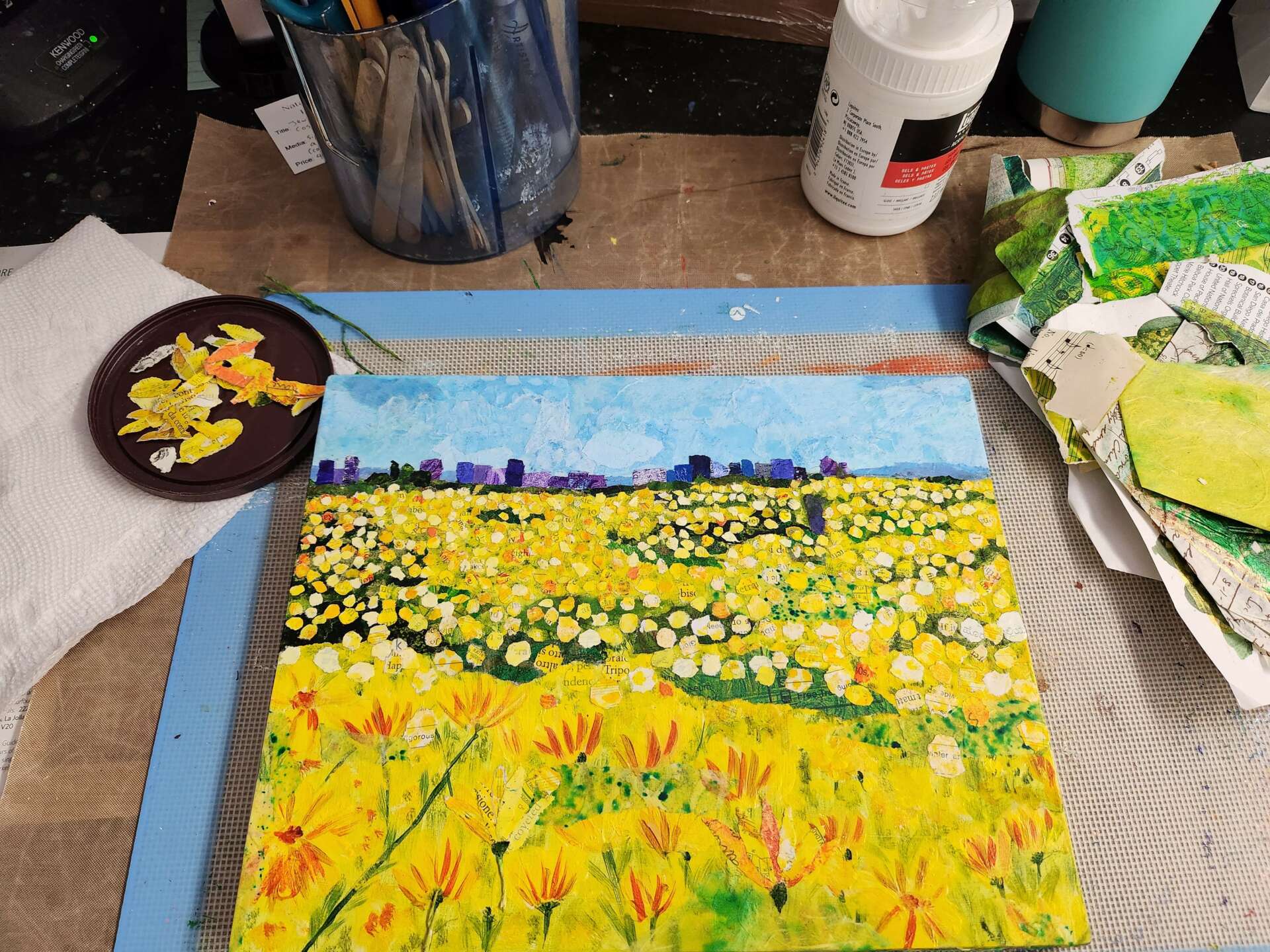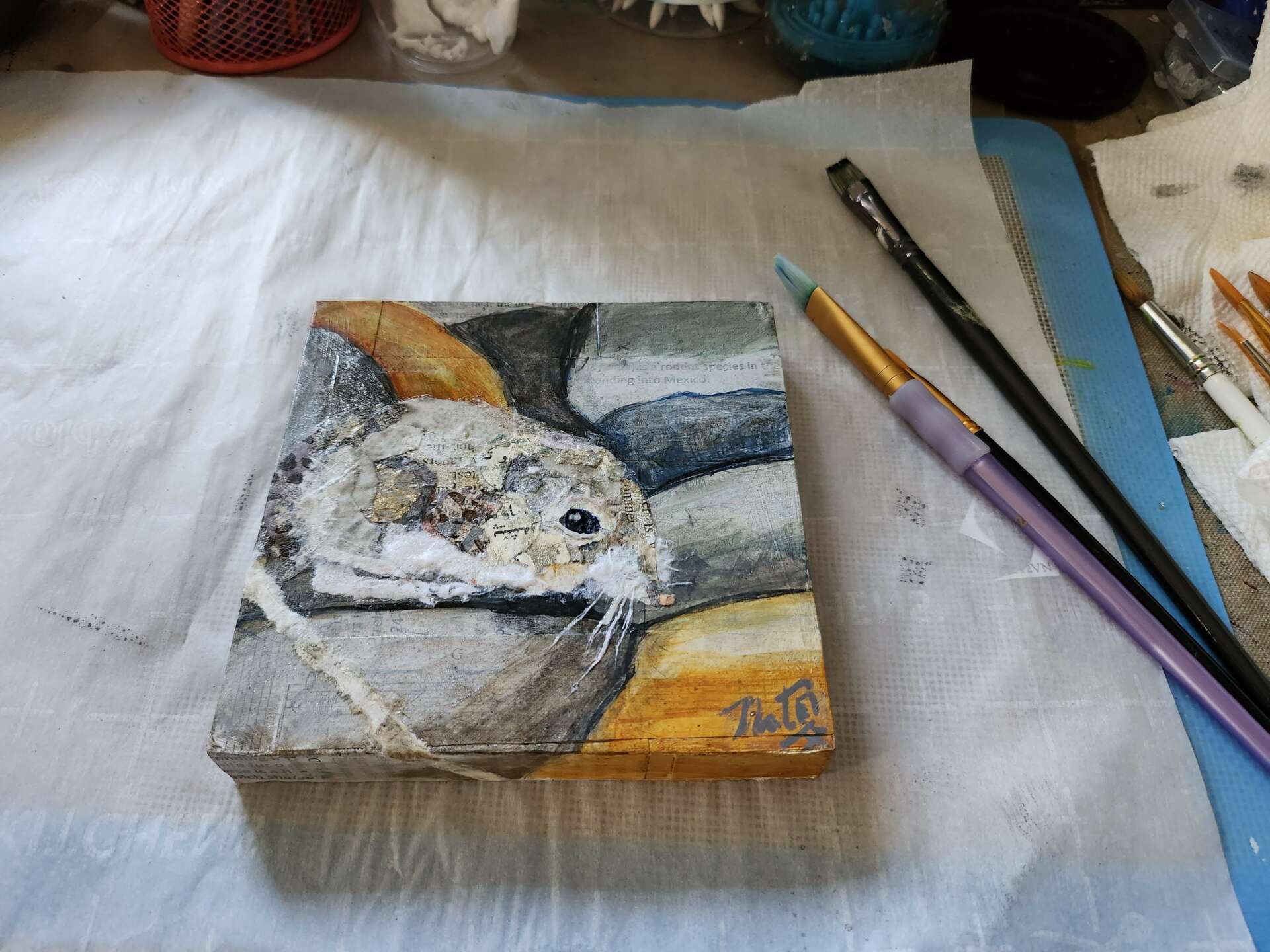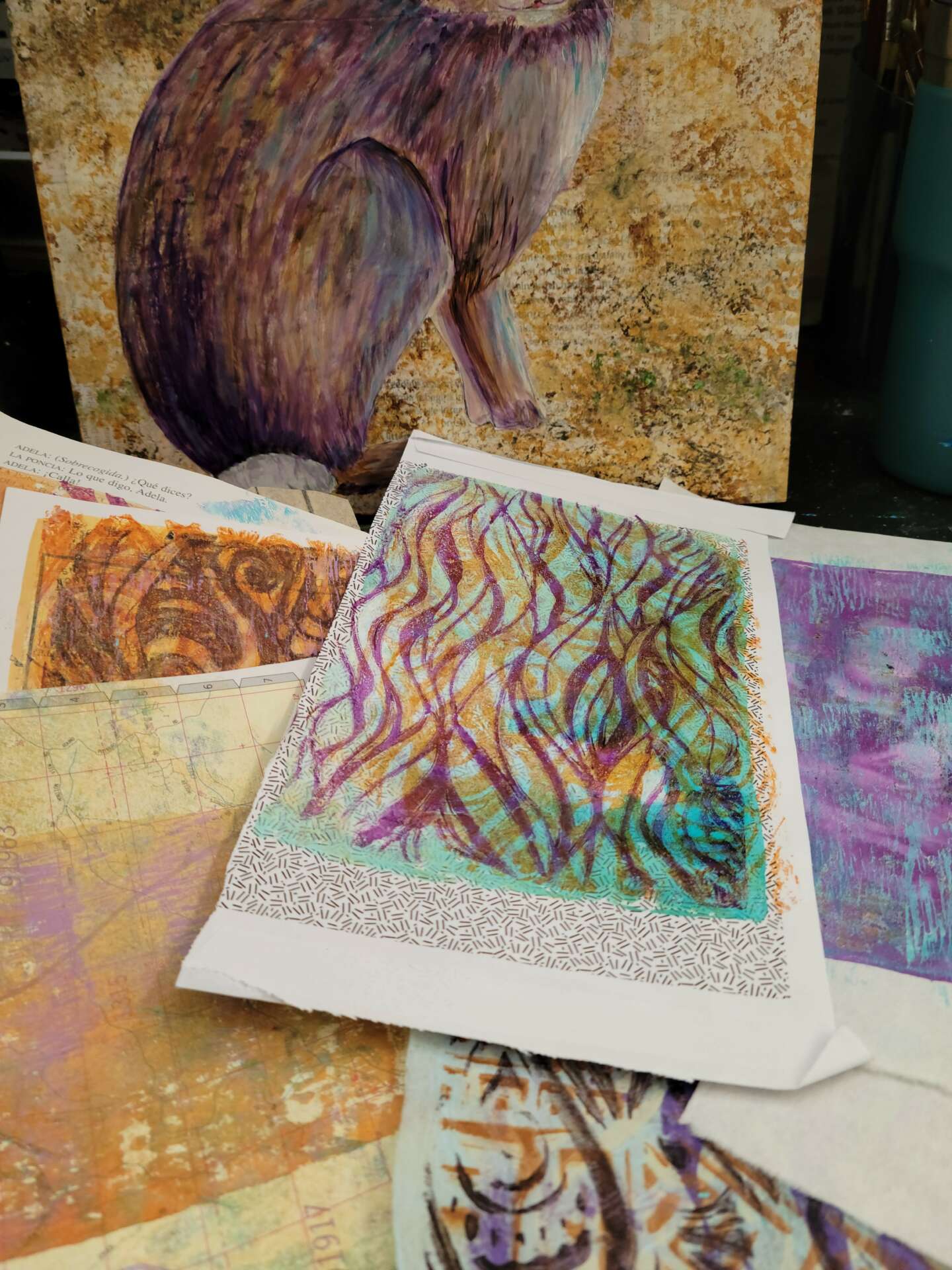We recently connected with Natasha Papousek and have shared our conversation below.
Hi Natasha, thanks for joining us today. Do you wish you had started sooner?
While there’s a part of me that wishes I had the confidence to begin sooner, I also recognize that I would have missed out on some incredible experiences if I had taken a different route. As I’ve grown older, my focus has sharpened, and there’s a certain determination that comes from knowing my time is limited.



Awesome – so before we get into the rest of our questions, can you briefly introduce yourself to our readers.
Journey: Growing up, I was the “creative” kid – from painting to doodles during math class to embroidering scenes of dragons and unicorns on my jeans. But adulthood pushed me towards a “practical” path, sidelining my artistic pursuits. Despite majoring in International Studies, an exchange program in China, and gaining experience in public radio, landing a job in that field was elusive. Saddled with student debt, I settled for various secretarial jobs while nurturing my artistic side with bands and side gigs. In 1997, my husband’s gift of a henna kit turned my passion into a side gig, which became a full-time business by 2010. With my henna now my profession, I needed a hobby and returned to my childhood love of mixed media and collage.
In 2018, I experienced the sudden loss of my father. His hidden treasure trove of beautiful paintings, never shared with anyone, left me deeply moved. He had often spoken of wanting to have an art show but always had excuses for why it wasn’t feasible then. And now, he would never be able to share his art. That was my saddest moment, knowing he had never fulfilled his deepest dream. This experience was a powerful reminder of the importance of pursuing our dreams and embracing our courage to bring them to life. I “retired” my kiosk at Seaport Village to focus on creating and sharing my collage paintings in a more professional way. I still do henna, but now it is only for parties and events.
The next year, I juried into the Spanish Village Art Center and also into the Southwestern Artists Association, both organizations that gave me the community I craved and the venue to share my art with the world.
what you think sets you apart from others
My process is a bit more involved than most artists. I start by sketching my compositions in paint. Then I have a scavenger hunt for various types of paper — from old maps and textbook pages to handmade and rice paper, looking for themes that might work with my subject. These papers are layered with paint, stencils, and scribbles, harmonizing with my subjects. I then tear the painted paper in “brushstrokes” and cover my underpaintings, creating a depth of texture and a unique visual story. The closer you look, the more you see.
What are you most proud of
Being part of a group show in the Mission Trails Regional Park Visitor’s Center this past January, It was such a thrill to see my work on the walls of that beautiful space and in the park that has inspired me so much!
What are the main things you want potential clients/followers/fans to know about you/your brand/your work/etc…
I am particularly drawn to subjects close to home, celebrating the flora and fauna of my Southern California surroundings. I prefer vivid, bright colors to convey a sense of joie de vivre in every piece. Through my art, I express our Earth’s profound power and beauty, capturing the spirit of joy surrounding us. Focusing on the un-noticed creatures and places gives them a voice and makes them visible as indispensable parts of our interconnected world.


Have any books or other resources had a big impact on you?
Artpreneur by Miriam Schulman
Atomic Habits by James Clear
Classes from the San Diego Small Business Development Center


Is there a particular goal or mission driving your creative journey?
The richness of our natural environment profoundly moves me. I hope everyone will recognize and value our surroundings and understand that even minor actions can bring significant ecological benefits. Planting a single native plant can aid numerous species. Take a live oak tree, for instance; it can support 163 butterfly species. A Fuschia-flowered gooseberry can benefit 71 species, while a small California aster helps up to 10 species. Even a lone native milkweed in a pot on your patio can make a difference for Monarch butterflies.
I am inspired by the Nurture Nature Network of the Environmental Center of San Diego and am a San Diego River Artists Alliance member. I also support Monarch Joint Venture’s and the Xerces Society’s goals of creating pesticide-free corridors to encourage butterflies and other pollinators.
Contact Info:
- Website: https://www.poppyfishstudiofineartstore.com/
- Instagram: @natashapapousek
- Facebook: https://www.facebook.com/natasha.papousek/
Image Credits
Natasha Monahan Papousek.


